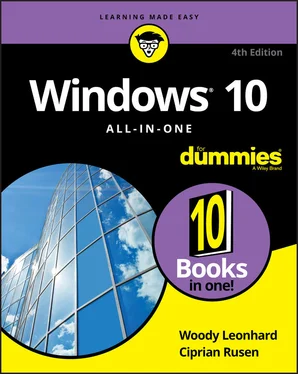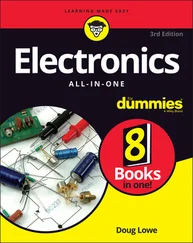 As far as I’m concerned, the Internet works so well because the engineers who laid the groundwork were utter geniuses. Their original ideas from 60 years ago have been through the wringer a few times, but they’re still pretty much intact. Here’s what the engineers decided:
As far as I’m concerned, the Internet works so well because the engineers who laid the groundwork were utter geniuses. Their original ideas from 60 years ago have been through the wringer a few times, but they’re still pretty much intact. Here’s what the engineers decided:
No single computer should be in charge. All the big computers connected directly to the Internet are equal (although, admittedly, some are more equal than others). By and large, computers on the Internet move data around like kids playing hot potato — catch it, figure out where you’re going to throw it, and let it fly quickly. They don’t need to check with some übercomputer before doing their work; they just catch, look, and throw.
Break the data into fixed-size packets. No matter how much data you’re moving — an email message that just says “Hi” or a full-color, life-size photograph of the Andromeda galaxy — the data is broken into packets. Each packet is routed to the appropriate computer. The receiving computer assembles all the packets and notifies the sending computer that everything came through okay.
Deliver each packet quickly. If you want to send data from Computer A to Computer B, break the data into packets and route each packet to Computer B by using the fastest connection possible — even if that means some packets go through Bangor and others go through Bangkok.
Taken together, those three rules ensure that the Internet can keep on functioning no matter what happens. If a chipmunk eats through a line, any big computer that’s using the gnawed line can start rerouting packets over a different one. If the Cumbersome Computer Company in Cupertino, California, loses power, computers that were sending packets through Cumbersome can switch to other connected computers. It usually works quickly and reliably, although the techniques used internally by the Internet computers get a bit hairy at times.
Big computers are hooked together by high-speed communication lines: the Internet backbone. If you want to use the Internet from your business or your house, you must connect to one of the big computers first. Companies that own the big computers — Internet service providers (ISPs) — get to charge you for the privilege of getting on the Internet through their big computers. The ISPs, in turn, pay the companies that own the cables (and satellites) that comprise the Internet backbone for a slice of the backbone.
 If all this sounds like a big-fish-eats-smaller-fish-eats-smaller-fish arrangement, that’s quite a good analogy.
If all this sounds like a big-fish-eats-smaller-fish-eats-smaller-fish arrangement, that’s quite a good analogy.
It’s backbone-breaking work, but somebody’s gotta do it.
What is the World Wide Web?
People tend to confuse the World Wide Web with the Internet, which is much like confusing the dessert table with the buffet line. I’d be the first to admit that desserts are mighty darn important — life-critical, in fact, if the truth be told. But they aren’t the same as the buffet line.
To get to the dessert table, you must stand in the buffet line. To get to the web, you have to be running on the Internet. Make sense?
The World Wide Web owes its existence to Tim Berners-Lee and a few co-conspirators at a research institute named CERN in Geneva, Switzerland. In 1990, Berners-Lee demonstrated a way to store and link information on the Internet so that all you had to do was click to jump from one place — one web page — to another. Nowadays, nobody in his right mind can give a definitive count of the number of pages available, but in 2016, Google reported that it had indexed more than 130 trillion pages. Since then, that number has surely exploded to many hundreds of trillions. Like the Internet itself, the World Wide Web owes much of its success to the brilliance of the people who brought it to life. The following list describes the ground rules:
Web pages, stored on the Internet, are identified by an address, such as www.dummies.com . The main part of the web page address — dummies.com, for example — is a domain name. With rare exceptions, you can open a web page by typing its domain name and pressing Enter. Spelling counts, and underscores (_) are treated differently from hyphens (-). Being close isn’t good enough — there are just too many websites. The part after the dot is the top-level domain. According to VeriSign, in June 2017, approximately 331.9 million domains were on the Internet, with top-level domains such as .com, .net, .org, .info, .biz, or .us. This statistic included all countries and country-specific top-level domains, such as co.uk (the UK equivalent of .com,) .br for Brazil, and .jp for Japan.
Web pages are written in the funny language HyperText Markup Language (HTML). HTML is sort of a programming language, sort of a formatting language, and sort of a floor wax, all rolled into one. Many products claim to make it easy for novices to create powerful, efficient HTML. Some of those products are getting close.
To read a web page, you must use a web browser. A web browser is a program or desktop app that runs on your computer and is responsible for converting HTML into text that you can read and use. Many people who view web pages use Google’s Chrome web browser, although Mozilla Firefox, Opera, and Microsoft’s Edge browser in Windows 10 are all contenders. Internet Explorer is still inside Windows 10, but you have to dig deep to find it. (Hint: Click the Start icon and then open Windows Accessories.) Internet Explorer is no longer actively maintained by Microsoft, and their plan is to convince people to use Microsoft Edge. If you don’t stick to the dated and insecure Internet Explorer, any web browser is a good choice.
More and more people (including me!) prefer Mozilla Firefox (see www.mozilla.org ), Opera (see www.opera.com ), or Chrome, from Google ( www.google.com /chrome). You may not know that Firefox and Chrome can run right alongside Internet Explorer and Microsoft Edge, with absolutely no confusion between the two. Err, four. In fact, they don’t even interact — Microsoft Edge, Firefox, and Google Chrome were designed to operate completely independently, and they do not mess with each other in any way, except when trying to promote themselves over their competitors.
One unwritten rule for the World Wide Web: All web acronyms must be completely, utterly inscrutable. For example, a web address is a Uniform Resource Locator, or URL. (The techies I know pronounce URL “earl.” Those who don’t wear white lab coats tend to say “you are ell.”) As I said earlier, the HTML acronym means HyperText Markup Language. On the web, a gorgeous, sunny, palm-lined beach with the scent of frangipani wafting through the air would no doubt be called SHS — Smelly Hot Sand. Sheeesh.
 The best part of the web is how easily you can jump from one place to another — and how easily you can create web pages with hot links (also called hyperlinks or just links) that transport the viewer wherever the author intends. That’s the H in HTML and the original reason for creating the web so many years ago.
The best part of the web is how easily you can jump from one place to another — and how easily you can create web pages with hot links (also called hyperlinks or just links) that transport the viewer wherever the author intends. That’s the H in HTML and the original reason for creating the web so many years ago.
Who pays for all this stuff?
"Who pays for all this stuff?" is the 64-billion-dollar question, isn’t it? The Internet is one of the true bargains of the 21st century. To get online, you probably have to pay AT&T, Comcast, Verizon, Mediacom, Evan, Cable One, CenturyLink, some other cable company, or another ISP a monthly fee. The fee you pay varies depending on the speed you want for your Internet connection and the services bundled with it, such as TV and online streaming subscriptions.
Читать дальше

 As far as I’m concerned, the Internet works so well because the engineers who laid the groundwork were utter geniuses. Their original ideas from 60 years ago have been through the wringer a few times, but they’re still pretty much intact. Here’s what the engineers decided:
As far as I’m concerned, the Internet works so well because the engineers who laid the groundwork were utter geniuses. Their original ideas from 60 years ago have been through the wringer a few times, but they’re still pretty much intact. Here’s what the engineers decided:










